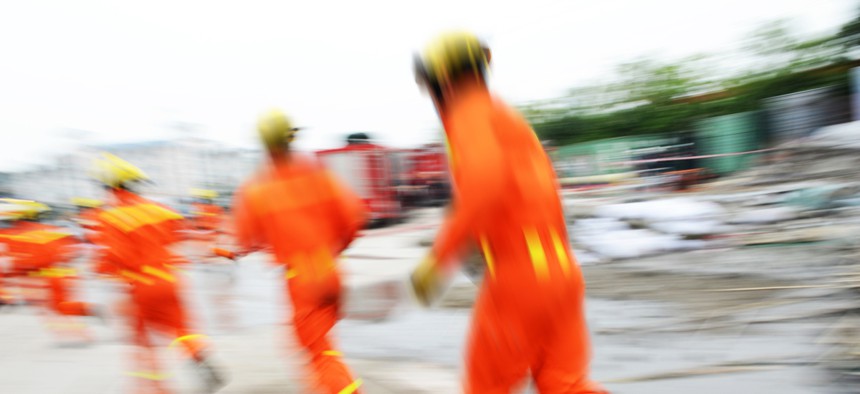These States are More Prepared for Public Health Emergencies

Health emergencies include disease outbreaks, natural disasters and terrorism. Shutterstock
The National Health Security Preparedness Index analyzes 129 measures to rank which states are most—and least—prepared to handle large-scale public health emergencies.
Massachusetts is best prepared to respond to a public health emergency, while Alaska, Ohio and Nevada lag behind in readiness, according to national rankings released this month.
The National Health Security Preparedness Index, updated last week, measures states’ readiness to respond to large-scale public health disasters, including severe weather, terrorism and outbreaks of diseases (think measles or Ebola).
The index began in 2013 as a project by the Centers for Disease Control and Prevention, but is compiled annually now as a collaborative effort involving more than 30 organizations and is funded by the Robert Wood Johnson Foundation. It allows officials to see how multi-agency partnerships are functioning and where improvements can be made, according to Dr. Nancy Messonnier, acting director of the CDC’s Center for Preparedness and Response.
“States and communities have a responsibility to be prepared to respond to health emergencies, and to recover quickly from them,” she said in a statement. “Having a comprehensive index helps states see where cross-sector investments and cooperation are paying off and where more effort is needed.”
The index analyzes 129 different measures—including the number of paramedics and medical volunteers, the percent of local health departments with an emergency preparedness coordinator and how many bridges are in good or fair condition—to calculate a composite score for the nation as a whole and for each individual state. A higher score indicates a better ability to “protect the health security of Americans.”
By those metrics, health systems across the nation continue to improve collectively, for the sixth year in a row. Overall, the country scored a 6.7 out of a possible 10, a 3.1 percent improvement from last year and an 11.7 percent improvement from 2013, the first year the index scores were compiled. Health security improved in 32 states and the District of Columbia, remained unchanged in 14 states and declined in four.
The largest gains occurred in countermeasure management, which analyzes states’ ability to “store and deploy health-related products and supplies that protect people from diseases and injuries.” States have also made big improvements in community planning and engagement, defined as “the ability to develop and maintain supportive relationships among government agencies, community organizations and individual households.”
But health security remains unequal across the country. The most-prepared state (Massachusetts) ranks 25 percent higher than the least prepared (Alaska), and states in the South, Northwest, Pacific Coast and Midwest regions have significantly lower levels of health security and smaller improvements over time than states in other regions. And states with below-average levels of health security tend to cluster together (for example, neighboring states Michigan, Ohio and Indiana all fell below the national average in 2018). Meanwhile, Rhode Island and Vermont joined Massachusetts in the better prepared category, as did Nebraska, Utah and Colorado.
“Geographic clustering of health security levels creates challenges for the nation by making it more difficult for states to offer mutual aid and assistance to neighboring jurisdictions when hazardous events occur,” an accompanying report explains. “Above-average states have become more geographically isolated from below-average states over the past six years, complicating the task of mutual aid.”
Emergency management officials and health professionals should work together to strengthen those regions to help prepare for future disasters, said Glen Mays, a lead researcher at the University of Kentucky who helped develop the index.
“We’ve seen steady gains nationwide, but some states and regions are falling behind while others are moving ahead,” Mays said in a statement. “The overall progress is commendable, but we need to accelerate the pace of improvement and help all regions get stronger. The frequency and intensity of disasters is increasing, and we are all at risk.”
Kate Elizabeth Queram is a Staff Correspondent for Route Fifty and is based in Washington, D.C.
NEXT STORY: Denver Voted to Decriminalize Magic Mushrooms. What Happens Next?





